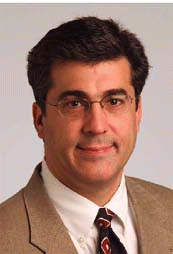Contact the Editor: ENToday welcomes your feedback about our publication! Contact us using the information below: ENToday@lwwny.com
Explore This Issue
July 2007SAN DIEGO—Last year, the New York Times asked if the hype about new technology is getting ahead of the science. In an article focusing on balloon sinuplasty, the newspaper questioned whether this new technology had been rushed too quickly into clinical practice, without more scientific evidence that it worked.
An article in the April 5, 2007 issue of the New England Journal of Medicine implied that another technology—image-guided mammography—may have not been tested thoroughly in advance. Data from 222,135 patients showed that the accuracy of diagnosis was reduced and the rate of biopsy increased with image-guided mammography. In addition, the change in the cancer detection rate was not significant.
These issues and others regarding new medical technology were the inspiration for an April 26 panel discussion during the American Rhinologic Society’s program at the Combined Otolaryngology Spring Meeting.
A ‘Medical Arms Race’
“We appear to be in a medical arms race and there are a number of drivers for this,” said panel organizer Marvin P. Fried, MD, Professor and University Chair in the Department of Otorhinolaryngology–Head and Neck Surgery at Montefiore Medical Center and Albert Einstein College of Medicine in New York.
Noting that health care providers and the public are always looking for better-quality, more effective treatment, he added that “sometimes, the new technology may overshoot the needs of patients. How many ways are there to do the same procedure?”
While the main concepts in technology assessment are need, safety, and cost, Dr. Fried said there is often a lack of published results from clinical trials. “However, randomization is not always feasible,” he said, illustrating his point with a humorous article in the British Medical Journal that described a supposed randomized testing of parachutes. The control group was to jump without this “new” device.
“There are times when withholding a device from the patient would not be ethical,” he commented.
Although all the panelists at the ARS program were involved in one way or another with the introduction of balloon sinuplasty, Dr. Fried urged them to use that experience only as a point of reference and focus their comments on the broader issues of the initial investigator’s point of view, the rationale and methods behind corporate development, and tips on how physicians should assess new technology.

Leave a Reply